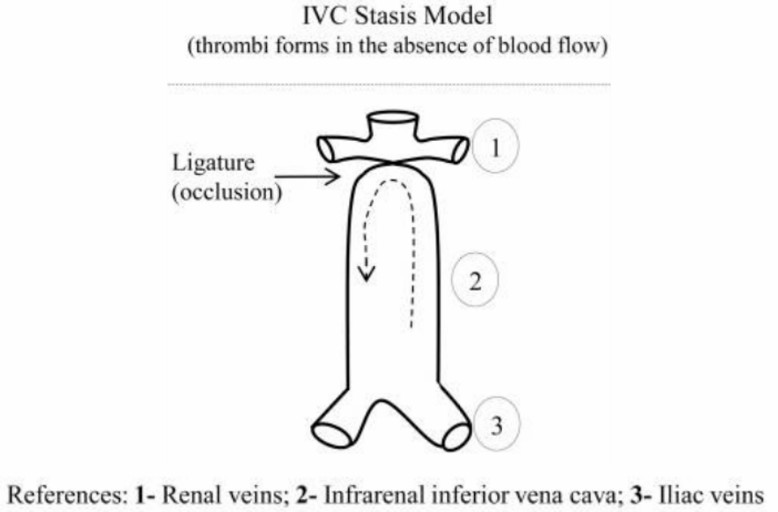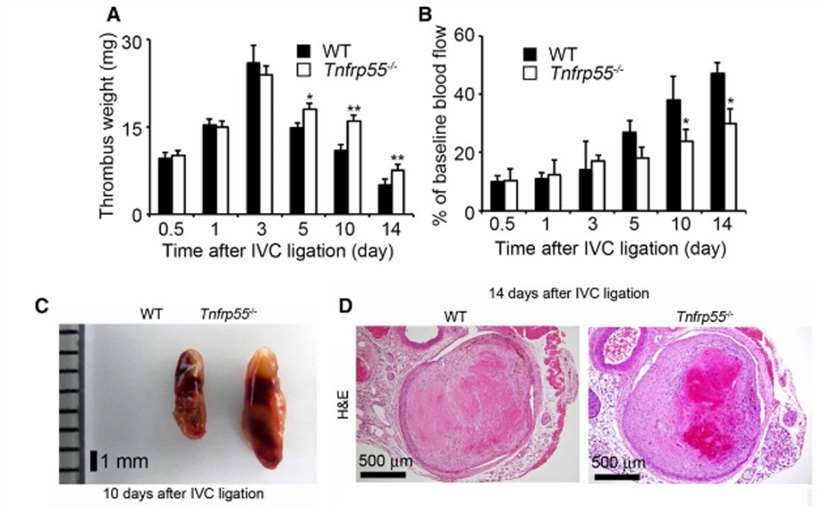Inferior Vena Cava (IVC) Stasis/Ligation Model
Creative Bioarray is a pioneering organization that specializes in the field of cardiovascular diseases. Our team of experts conducts rigorous and comprehensive efficacy studies using the inferior vena cava (IVC) stasis/ligation model to evaluate potential therapeutic interventions for a wide range of cardiovascular conditions. Through this model, we aim to advance the understanding of disease mechanisms and contribute to the development of effective treatments.
Deep vein thrombosis (DVT) and its fatal complication, pulmonary embolism, constitute a grave health hazard with significant mortality rates. To devise more effective and targeted therapies, a profound understanding of DVT pathogenesis is imperative. To this end, numerous animal models of venous thrombosis have been established in both small and large animals. Prominently among these, the inferior vena cava stasis model emerges as an invaluable resource. The mechanism underlying thrombus formation in this model closely resembles the interplay between venous stasis and the enhanced local release of tissue factor, leading to augmented coagulation within the vein. This model offers a robust platform for investigating DVT pathogenesis and evaluating potential therapeutic interventions.
Our Inferior Vena Cava (IVC) Stasis/Ligation Model
- Available Animal
Rat
- Modeling Method
After anesthesia is administered, a meticulous dissection is performed on the inferior vena cava to separate it from the adjacent tissue. Subsequently, the vena cava, along with all of its side branches, is meticulously ligated to ensure complete occlusion of blood flow.
 Fig. 1 Schematic representation of ligation IVC model. (Diaz et al. 2012)
Fig. 1 Schematic representation of ligation IVC model. (Diaz et al. 2012)
- Endpoints
- Weight of thrombus
- Length of thrombus
- Biomarker analysis
- Histology analysis
- qPCR or Western blot
- Other customized endpoints
Example Data
 Fig. 2 Inferior vena cava (IVC) ligation–induced deep vein thrombus in wild-type (WT) and Tnfrp55-/- mice. A, Thrombus weights of WT and Tnfrp55-/- mice at the indicated time intervals after IVC ligation. B, The measurement of IVC blood flow by laser Doppler imaging. C, Macroscopic appearance of venous thrombi in WT and Tnfrp55-/- mice at 10 d after the IVC ligation. D, H&E staining of venous thrombi obtained from WT and Tnfrp55-/- mice at 14 d after the IVC ligation. (Nosaka et al. 208)
Fig. 2 Inferior vena cava (IVC) ligation–induced deep vein thrombus in wild-type (WT) and Tnfrp55-/- mice. A, Thrombus weights of WT and Tnfrp55-/- mice at the indicated time intervals after IVC ligation. B, The measurement of IVC blood flow by laser Doppler imaging. C, Macroscopic appearance of venous thrombi in WT and Tnfrp55-/- mice at 10 d after the IVC ligation. D, H&E staining of venous thrombi obtained from WT and Tnfrp55-/- mice at 14 d after the IVC ligation. (Nosaka et al. 208)
In addition, we also provide other thrombosis models that maybe you are interested in:
Quotation and Ordering
Creative Bioarray offers highly efficient preclinical services that are cost-effective and time-saving. Our team of experienced scientists is dedicated to assisting clients in selecting the most appropriate model and customizing study protocols to achieve optimal results using minimal resources. If you are interested in our services, please feel free to contact us at any time or submit an inquiry to us directly.
References
- Wrobleski, S.K., et al. Mouse complete stasis model of inferior vena cava thrombosis. J Vis Exp, 2011;(52):2738.
- Albadawi, H., et al. Animal models of venous thrombosis. Cardiovasc Diagn Ther, 2017;7(Suppl 3): S197-S206.
- Nosaka, M., et al. Contribution of the TNF-α (Tumor Necrosis Factor-α)–TNF-Rp55 (Tumor Necrosis Factor Receptor p55) axis in the resolution of venous thrombus. Arteriosclerosis, thrombosis, and vascular biology, 2018, 38(11): 2638-2650.
- Diaz, J.A., et al. Critical review of mouse models of venous thrombosis. Arterioscler Thromb Vasc Biol, 2012;32(3):556-562.